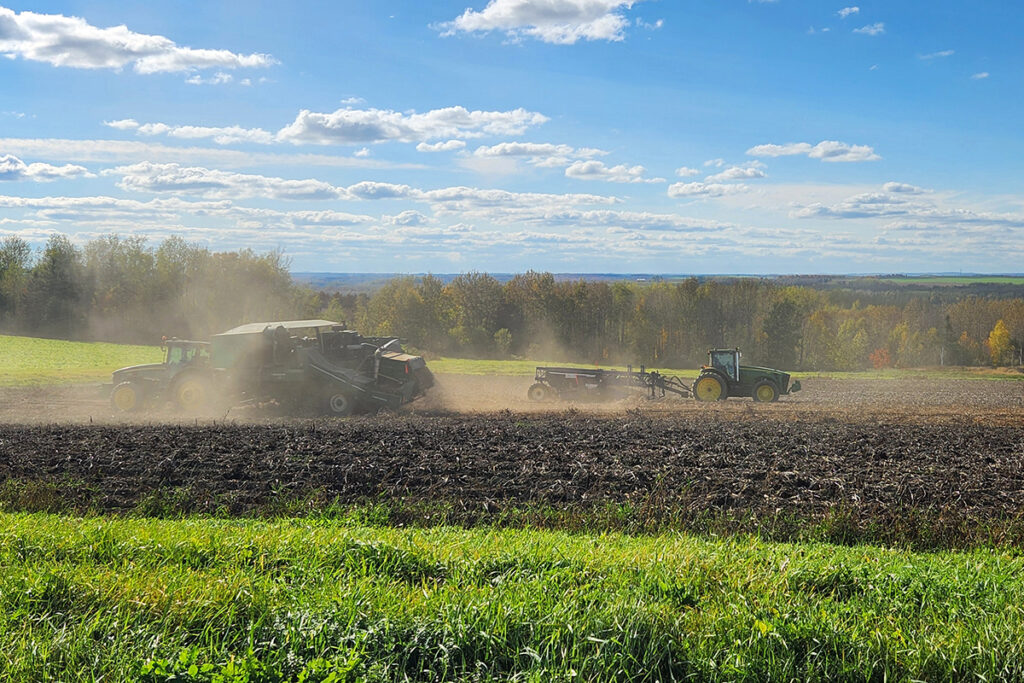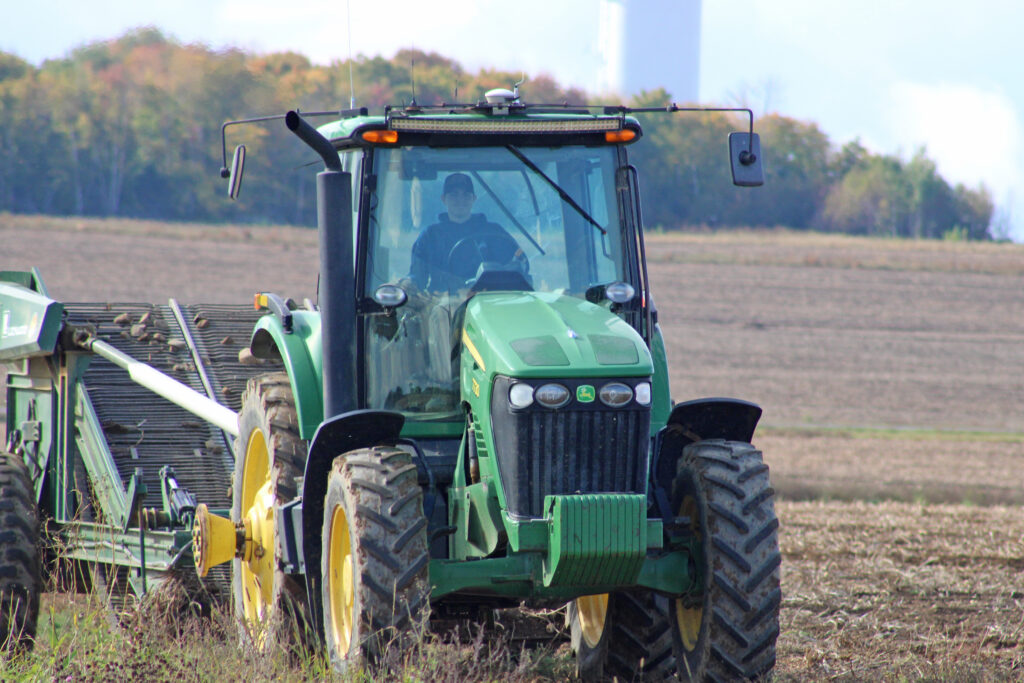
Amid sunny, dry days, Aroostook County farmers are harvesting day and evening to bring in the 2024 crop. They’re happier than they were a year ago.
Constant rain last year delayed planting and a lot of potatoes grew in water. Some dry harvest days saved most of the crop, but yields were lower statewide, down to 1.68 billion pounds from 1.84 billion pounds in 2022, according to the U.S. Department of Agriculture.
This year brought a welcome reversal. Consistent and far drier weather led to early planting, good growth and no saturated or rotting potatoes, local farmers reported. A good harvest in The County, which grows 90 percent of Maine’s crop, means more money in growers’ pockets and stability for the state’s top food product.
Keith Thibeau Sr., sons Keith and Connor and crew from Thibeau Farms in Fort Fairfield were finishing the last of their 320 acres Tuesday afternoon. Dust rose up from the rows as they worked, indicating the dry state of the soil compared to last year’s mud.
“It’s been great weather. We had to go around some wet spots last year, but it’s different this year,” said Keith Thibeau Jr., who with his brother comprises the sixth generation at the farm. “The yield is better than last year’s, too, so that makes it all worthwhile.”
In fact, recent rain helped keep the dust down a bit, he said.
That’s a far cry from last year, when Caribou set a record for August rainfall with 6.6 inches and had 4 inches of rain in September, according to the National Weather Service. This year, only 3.6 inches of rain fell in August, near average, and less than an inch in September.
It’s been a swift harvest, and they only had to stop for three days because of 80-degree temperatures, Connor Thibeault said. It was simply too hot to dig.
“We try not to put potatoes in storage when their internal temperature is above 65 degrees,” he said.
If the tubers are too warm going into storage, they can sprout or rot.

(Paula Brewer, The Star-Herald)
The University of Maine Cooperative Extension noted a higher incidence of pests like aphids and Colorado potato beetles this year, due in part to milder winters. Specialists recommended regular spray treatments.
The beetles were more plentiful in the Thibeaus’ fields, but pesticide spraying managed them, Connor Thibeau said.
After harvest, the farm turns to packaging and shipping, which they do from October to April, he said. Thibeau Farms grows all fresh-market potatoes that they sell mostly along the East Coast, including Hannaford, ShopRite and Market Basket stores.
Kellen McCrum, part of the McCrum farming operation, manned a harvester on Friday in a Presque Isle field of Russet Burbanks destined for the family’s french fry plant in Washburn. Morning rain delayed work briefly, but otherwise the soil has been dry and the potatoes look good, he said.

(Paula Brewer, The Star-Herald)
The McCrum company grows, sells and ships potatoes for processing into french fries and potato chips. The five-generation farm operation grows about 3,000 acres as County Farms of Mars Hill, and owns farms in Bethel and Standish.
Besides the Penobscot McCrum plant in Washburn, the company also includes potato dealer County Super Spuds and JDR Transport in Mars Hill.
The drier weather this summer and fall has made for a good crop and swift harvest, company partner Nick McCrum said Wednesday.
“Yields are average to above average and the potatoes are of very good quality,” he said. “It’s been a beautiful harvest season for getting the crop out.”
The largest part of the harvest is done, McCrum said, adding that the crop going into storage will likely be finished Friday and potatoes headed for fresh processing will follow soon after.
Most of the crop goes to their Washburn plant for french fries, he said. The rest goes to potato chip processors Frito-Lay, Cape Cod and Utz.
Western states like Idaho and Washington rank first and second in the nation’s potato production. Maine is consistently in the top 10 and ranked ninth in 2023, according to the USDA.
Growers plant crops for three major purposes: fresh potatoes, seed and processing. More than two-thirds of the nation’s spuds go to processors, and most of those become frozen french fries.
In 2023 nationwide, 16 billion pounds of potatoes were made into fries, the USDA’s 2023 potato summary stated. Chips are second, using 5.7 billion pounds of tubers last year. Other spuds were processed as dehydrated flakes and starch, canned by themselves or in soups, and fresh-pack products like mashed potatoes and vodka.







